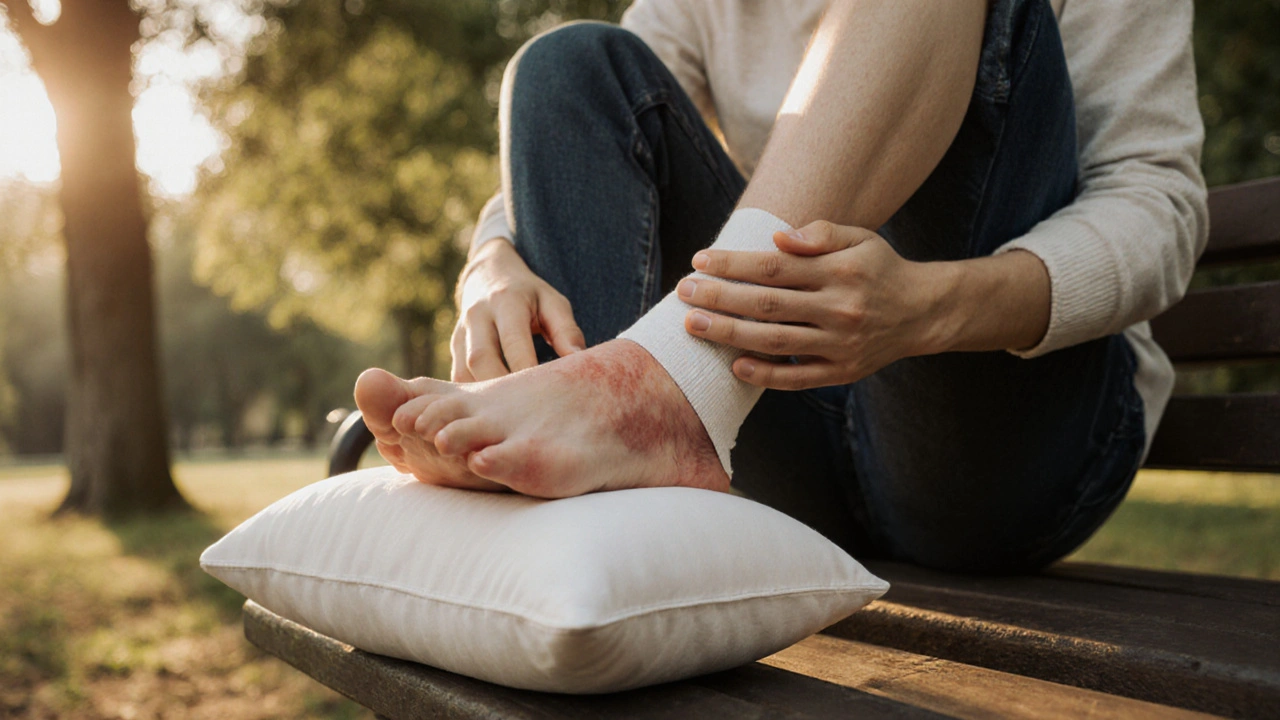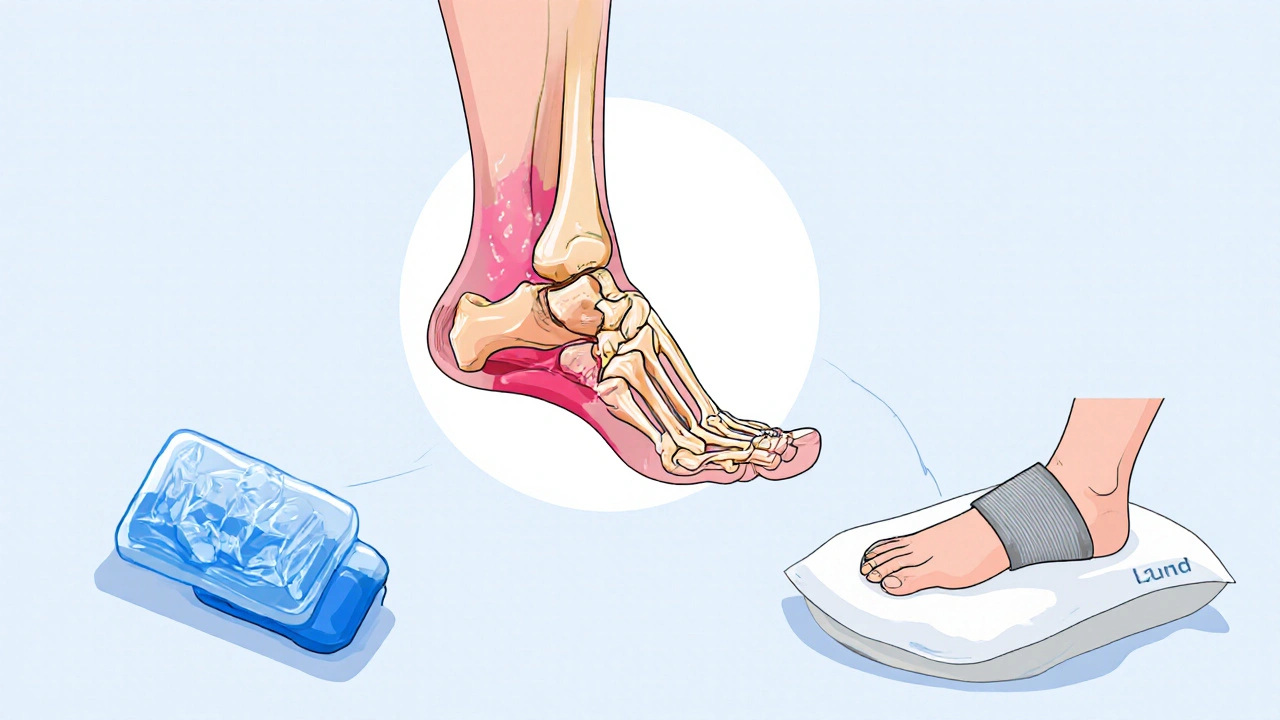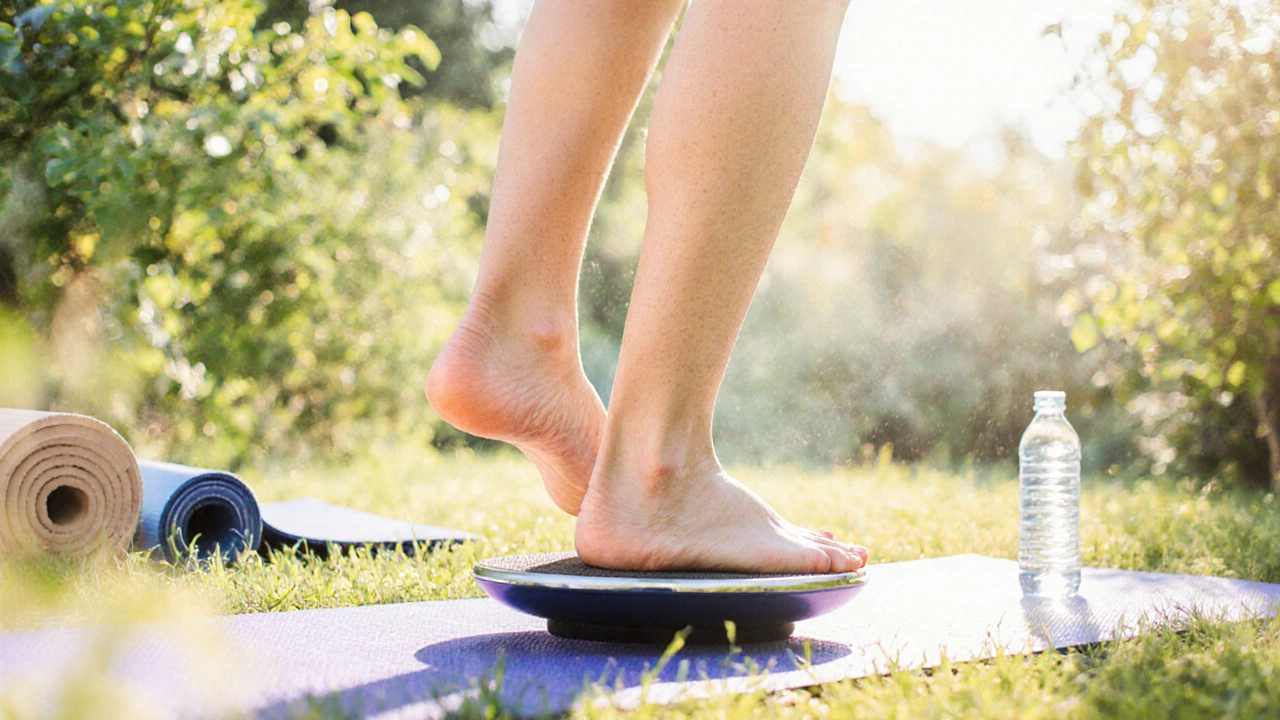Effective Sprain Treatment: Managing Swelling and Reducing Inflammation
 Oct, 4 2025
Oct, 4 2025
Sprain Severity Checker
Severe Pain
Pain so intense it prevents walking or bearing weight on the affected joint.
Inability to Bear Weight
Cannot walk or put any weight on the injured joint without extreme discomfort.
Severe Swelling
Significant swelling that makes the joint appear deformed or misshapen.
Joint Instability
The joint feels loose, wobbly, or unstable when moved or touched.
Numbness or Tingling
Loss of sensation or tingling in the injured area or nearby regions.
Bruising
Significant bruising or discoloration around the injured joint.
Your Sprain Assessment

Key Takeaways
- Act within the first 48hours using the RICE protocol to curb swelling.
- Cold therapy, compression, and elevation are the cornerstone of inflammation control.
- Non‑steroidal anti‑inflammatory drugs (NSAIDs) help with pain but aren’t a cure‑all.
- Seek professional care if you can’t bear weight, notice severe bruising, or the joint feels unstable.
- Gradual rehab restores joint stability and prevents future injuries.

Understanding Sprains and Swelling
Sprain is a stretch or tear of ligaments that connect bones around a joint. The damage triggers an immune response that leaks fluid into the surrounding tissue, leading to Swelling accumulation of excess fluid in the interstitial spaces of the injured area. This fluid carries inflammatory chemicals-histamine, prostaglandins, and cytokines-that cause the classic signs of Inflammation redness, heat, pain, and loss of function at the injury site. Recognizing these signals early helps you decide when home care is enough and when you need a clinician.
Theunis Oliphant
October 4, 2025 AT 17:30One must approach sprain management with the rigor of a scholar, lest one descends into the quagmire of amateur remedies. The RICE protocol, when executed with disciplined timing, is not merely a suggestion but a covenant with one’s own physiology. Neglecting the first 48 hours is tantamount to a betrayal of the body’s innate healing mechanisms. Moreover, the employment of NSAIDs should be judicious, preserving the inflammatory cascade that is essential for tissue repair. In sum, a disciplined adherence to evidence‑based steps distinguishes the enlightened from the reckless.
India Digerida Para Occidente
October 6, 2025 AT 00:33It is heartening to see a comprehensive guide that balances urgency with patience. The emphasis on early intervention, coupled with a clear fallback to professional care, reflects a mature understanding of injury dynamics. By championing both self‑care and medical oversight, the article offers a bridge between laypersons and clinicians that many would applaud.
Andrew Stevenson
October 7, 2025 AT 05:43From a biomechanical perspective, the cascade of events following ligamentous overstretch is a textbook illustration of acute inflammatory response. Initially, nociceptors are activated, releasing substance P and calcitonin‑gene‑related peptide, which sensitize peripheral nerve endings. Concurrently, vascular permeability rises, driven by histamine and bradykinin, leading to exudation of plasma proteins into the interstitial space – the hallmark swelling observed clinically. This edema, while visually alarming, serves a protective function by limiting further mechanical strain on the compromised tissue.
The RICE protocol strategically targets these pathophysiological processes. Rest eliminates repetitive mechanical loading, preventing exacerbation of micro‑tears. Ice, typically administered at 10‑15°C for 20‑30 minutes, induces vasoconstriction, attenuating the hyperemic phase and thereby moderating the inflammatory milieu. Compression, via elastic bandages, exerts external pressure that encourages venous return, reducing interstitial fluid accumulation. Elevation leverages hydrostatic principles, facilitating gravitational drainage of the edematous fluid toward the central circulatory system.
Pharmacologically, NSAIDs inhibit cyclo‑oxygenase enzymes COX‑1 and COX‑2, curbing prostaglandin synthesis, which diminishes both pain perception and edema formation. However, clinicians caution against indiscriminate use, as prostaglandins also mediate angiogenesis and collagen synthesis – processes vital for ligament remodeling.
When transitioning to the rehabilitation phase, proprioceptive training becomes paramount. Exercises such as theraband inversion/eversion, single‑leg stance on unstable surfaces, and closed‑kinetic‑chain movements foster neuromuscular re‑education, restoring joint stability and mitigating future sprain risk. Progressive loading, calibrated in % of body weight, should be introduced only after pain-free range of motion is reinstated.
In sum, the article commendably outlines the acute management steps but could further enrich its utility by integrating timelines for each phase of healing, specific dosage recommendations for analgesics, and criteria for safe return to sport or occupational duties. Such granularity empowers patients to navigate the recovery continuum with confidence and scientific backing.
Kate Taylor
October 8, 2025 AT 08:06Great rundown! I’d add that consistent gentle mobilization after the initial 48‑hour RICE window can prevent stiffness and promote synovial fluid circulation. Also, keeping a log of pain levels each day helps you spot any red flags early. Remember, the goal is a balanced approach: protect the joint while gradually restoring function.
Hannah Mae
October 9, 2025 AT 11:53i dont think you need all that fancy stuff. just ice it, rest it, and be done. people make it way too complicated.
Iván Cañas
October 10, 2025 AT 15:40Yo, love the vibe of this guide. In my town we swear by a cold compress wrapped in a towel – keeps it chill without the frostbite risk. Also, a little turmeric tea can help with inflammation, just a home‑grown tip.
Jen Basay
October 11, 2025 AT 05:33Interesting read! :) I appreciate the step‑by‑step layout – makes it easy to follow when you’re in pain. Keeping a simple checklist can really keep you on track.
Hannah M
October 11, 2025 AT 19:26Thanks for the clear guide! 🙌 It’s awesome to have concrete steps without the medical jargon. I’ll definitely use the RICE protocol next time I twist my ankle.
Poorni Joth
October 12, 2025 AT 09:20While the article is well‑intentioned, it glosses over the moral responsibility of seeking professional care when symptoms persist. Ignoring such advice can lead to chronic instability, which is a disservice to one’s own health.
Yareli Gonzalez
October 12, 2025 AT 23:13Solid advice.